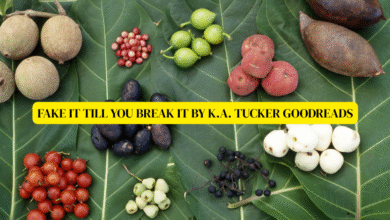Exploring the Comptoir Commercial du Languedoc

The term Comptoir Commercial du Languedoc might sound like a mouthful, but it carries a rich history and cultural significance that’s worth unraveling. If you’ve stumbled across this phrase while researching French trade, history, or travel, you’re in for a treat. This article is your guide to understanding what the Comptoir Commercial du Languedoc is, its historical roots, its impact on the region, and why it still matters today. I’ll share insights from my own experiences exploring the Languedoc region, sprinkle in some practical tips, and make this as engaging and beginner-friendly as possible. Let’s dive in!
What Is the Comptoir Commercial du Languedoc?
At its core, a comptoir commercial translates to a “commercial counter” or trading post in English. Historically, these were hubs where merchants gathered to buy, sell, and exchange goods. The Languedoc region, located in southern France, was a bustling area for trade centuries ago, thanks to its strategic position along Mediterranean trade routes. The Comptoir Commercial du Languedoc refers to the organized trade networks and commercial establishments that facilitated economic activity in this region, particularly during the medieval and early modern periods.
Picture this: a lively marketplace in a sun-drenched Languedoc town, with merchants haggling over barrels of wine, bolts of cloth, and exotic spices from distant lands. That’s the essence of the comptoir— a place where commerce and culture collided. Today, the term might also evoke modern businesses or cooperatives in Languedoc that draw on this historical legacy, especially in industries like wine, agriculture, and tourism.
Why Languedoc?
Languedoc is a region in southern France known for its diverse landscapes, from rugged mountains to golden beaches. Its name comes from langue d’oc, the medieval language spoken in the area, which used “oc” for “yes” (as opposed to “oïl” in northern France). The region’s geography made it a natural hub for trade, connecting the Mediterranean to inland Europe. Its ports, like Sète and Narbonne, were gateways for goods moving to and from Spain, Italy, and beyond.
During a trip to Languedoc a few years ago, I wandered through the narrow streets of Carcassonne, a fortified city that feels like it’s frozen in time. The markets there, even today, buzz with the same energy you’d imagine from centuries past. Vendors selling local cheeses, olives, and wines gave me a glimpse of what those early comptoirs might have been like—vibrant, chaotic, and full of life.
The Historical Significance of the Comptoir Commercial du Languedoc
To truly appreciate the Comptoir Commercial du Languedoc, we need to step back into history. The Languedoc region has been a commercial powerhouse for centuries, and its trading posts played a pivotal role in shaping its economy and culture.
Medieval Trade and the Rise of Comptoirs
In the Middle Ages, Languedoc was a crossroads for trade between Europe, North Africa, and the Middle East. Its coastal towns were perfect for maritime commerce, while inland markets connected rural producers with urban buyers. The comptoirs were often physical marketplaces or guild-regulated trading posts where merchants negotiated deals under strict rules to ensure fairness.
One fascinating aspect is how these comptoirs weren’t just about goods—they were cultural melting pots. Traders from different regions brought not only products but also ideas, languages, and traditions. For example, the influence of Arabic and Jewish merchants in Languedoc introduced new agricultural techniques and spices, enriching the region’s cuisine.
The Wine Trade: Languedoc’s Golden Asset
If there’s one thing Languedoc is famous for, it’s wine. The region’s vineyards have been producing wine since Roman times, and by the medieval period, Languedoc wines were a hot commodity across Europe. The comptoirs were central to this trade, serving as distribution points where vintners sold their barrels to merchants who shipped them to places like England and Flanders.
I remember visiting a small winery near Montpellier, where the owner proudly showed me ancient stone vats used for winemaking centuries ago. He explained how Languedoc’s wine trade was so lucrative that it shaped the region’s economy, with comptoirs acting as the backbone of this industry. Even today, Languedoc produces more wine than any other region in France, and its commercial spirit lives on in modern cooperatives and export businesses.
The Role of Guilds and Regulation
Comptoirs weren’t chaotic free-for-alls. They were tightly regulated by merchant guilds, which set standards for quality, pricing, and trade practices. These guilds ensured that goods like wine, textiles, and olive oil met certain standards, building trust among buyers and sellers. This system laid the groundwork for Languedoc’s reputation as a reliable trading partner.
Fun fact: during my visit to Narbonne, I learned about the Consulat de Mer, a medieval maritime and commercial code that governed trade in Languedoc’s ports. It was like an early version of international trade law, ensuring disputes were settled fairly and goods moved smoothly.
The Modern Comptoir: How Languedoc’s Commercial Spirit Lives On
While the medieval comptoirs are long gone, their legacy endures in Languedoc’s modern economy. Today, the term Comptoir Commercial du Languedoc might refer to businesses, cooperatives, or even cultural initiatives that celebrate the region’s trading heritage. Let’s explore how this legacy manifests in the 21st century.
Languedoc’s Wine Industry Today
Wine remains the heart of Languedoc’s economy, and modern comptoirs take the form of cooperatives and export companies. These organizations connect small-scale vintners with global markets, much like their medieval predecessors. For example, the Côtes du Languedoc appellation is renowned for its red, white, and rosé wines, which are exported worldwide.
When I attended a wine festival in Pézenas, I was struck by how local producers worked together to promote their wines. They shared stories of their vineyards, blending tradition with modern marketing. It felt like a modern comptoir in action—producers pooling resources to compete on a global stage.
Tourism and Cultural Commerce
Languedoc’s rich history and stunning landscapes have made tourism a major industry. The region’s markets, festivals, and historical sites draw millions of visitors each year, and businesses have sprung up to cater to them. From artisanal food shops to guided tours of medieval trade routes, these modern “comptoirs” trade in experiences rather than just goods.
One of my favorite experiences was a market in Sète, where I bought fresh mussels and a bottle of Picpoul de Pinet, a crisp local white wine. The vendor, a cheerful woman who’d grown up in the area, told me how her family had been fishing and trading in Sète for generations. It was a reminder that commerce in Languedoc isn’t just about money—it’s about community and tradition.
Sustainable Trade and Local Products
Sustainability is a big deal in Languedoc today, and many businesses are reviving the comptoir spirit by focusing on local, eco-friendly products. Olive oil, lavender, and honey are just a few of the region’s specialties, often sold through cooperatives that prioritize fair trade and environmental stewardship.
During a visit to a lavender farm near Uzès, I saw how farmers used traditional methods to produce high-quality lavender oil, which was then sold through a local cooperative. This cooperative acted as a modern comptoir, connecting small producers with buyers across Europe. It was inspiring to see how Languedoc’s commercial heritage is being adapted to meet modern values.
Why the Comptoir Commercial du Languedoc Matters Today
You might be wondering: why should we care about a historical trading system in 2025? The answer lies in how the comptoir’s principles—community, quality, and connection—still resonate. Here are a few reasons why the Comptoir Commercial du Languedoc remains relevant:
-
Economic Resilience: Languedoc’s focus on local products and cooperatives shows how small-scale producers can thrive in a globalized world.
-
Cultural Identity: The region’s trading history is a source of pride, celebrated in festivals, museums, and markets.
-
Sustainability: Modern comptoirs prioritize eco-friendly practices, aligning with global demands for sustainable commerce.
-
Tourism Appeal: The story of Languedoc’s trade history draws visitors, boosting the local economy.
Tips for Exploring Languedoc’s Commercial Heritage
If you’re planning a trip to Languedoc or just want to learn more, here are some practical tips to connect with its commercial past and present:
Visit Historic Markets
-
Carcassonne Market: Held every Saturday, this market is a vibrant mix of food, crafts, and local wines. It’s like stepping into a medieval comptoir.
-
Sète Fish Market: If you love seafood, don’t miss this bustling market where you can sample fresh catches and local wines.
-
Pézenas Market: Known for its artisanal goods, this market is perfect for finding unique souvenirs like lavender soap or olive oil.
Tour Wineries and Cooperatives
-
Join a Wine Tour: Many vineyards offer tours that explain the history of Languedoc’s wine trade. I recommend checking out Château de Flaugergues near Montpellier.
-
Visit a Cooperative: Places like the Cave Coopérative de Pomerols showcase how modern comptoirs work, with tastings and tours available.
Explore Historical Sites
-
Narbonne’s Via Domitia: This ancient Roman road was a key trade route, and you can still see parts of it today.
-
Carcassonne’s Citadel: A UNESCO World Heritage site, this fortified city was a hub for medieval trade.
Shop Local
Support Languedoc’s modern comptoirs by buying local products. Look for AOC (Appellation d’Origine Contrôlée) wines, organic olive oil, or handmade crafts. These purchases help sustain the region’s economy and preserve its heritage.
How Languedoc’s Trade History Shapes Its Future
The Comptoir Commercial du Languedoc isn’t just a relic of the past—it’s a blueprint for the future. As global markets become more competitive, Languedoc’s focus on quality, community, and sustainability gives it an edge. For example, the region’s wine cooperatives are experimenting with organic and biodynamic farming, appealing to eco-conscious consumers. Similarly, tourism initiatives are promoting “slow travel,” encouraging visitors to immerse themselves in Languedoc’s culture and history.
I’ve always been impressed by how Languedoc balances tradition with innovation. During my last visit, I met a young entrepreneur in Béziers who was using e-commerce to sell local honey and wine to customers in the U.S. and Asia. He told me, “We’re keeping the spirit of the comptoir alive, but now we’re trading with the world.” It’s a perfect example of how Languedoc’s commercial heritage continues to evolve.
Common Misconceptions About the Comptoir Commercial du Languedoc
As I researched this topic, I came across a few misconceptions that are worth clearing up:
-
It’s Just About Wine: While wine is a major part of Languedoc’s trade, comptoirs handled everything from textiles to spices. Today, the region’s commercial diversity includes tourism, agriculture, and crafts.
-
It’s a Thing of the Past: The comptoir spirit lives on in modern cooperatives, markets, and businesses that connect Languedoc to global markets.
-
It’s Only for Historians: Anyone can appreciate Languedoc’s commercial heritage, whether you’re a traveler, a foodie, or just curious about French culture.
How to Support Languedoc’s Modern Comptoirs
Want to get involved? Here are some ways to support Languedoc’s commercial legacy:
-
Buy Local Products: Choose Languedoc wines, olive oil, or honey from cooperatives or small businesses.
-
Visit During Festivals: Events like the Fête du Vin in Montpellier celebrate the region’s trade history with tastings, music, and markets.
-
Spread the Word: Share your experiences on social media to promote Languedoc’s unique culture and products.
A Personal Conclusion: Why I Love Languedoc’s Commercial Spirit
When I first visited Languedoc, I was drawn to its stunning landscapes and delicious food, but what left a lasting impression was its people. From the winemaker who shared his family’s centuries-old recipe to the market vendor who taught me how to pair mussels with Picpoul, I felt a deep connection to the region’s commercial heritage. The Comptoir Commercial du Languedoc isn’t just a historical concept—it’s a living tradition that brings people together through trade, culture, and community.
Whether you’re sipping a glass of Languedoc wine, exploring a medieval market, or supporting a local cooperative, you’re part of this vibrant legacy. My takeaway? Languedoc teaches us that commerce isn’t just about buying and selling—it’s about building connections that last for generations. So, next time you’re planning a trip or looking for a unique wine, think of Languedoc and its timeless comptoirs. You won’t be disappointed.



